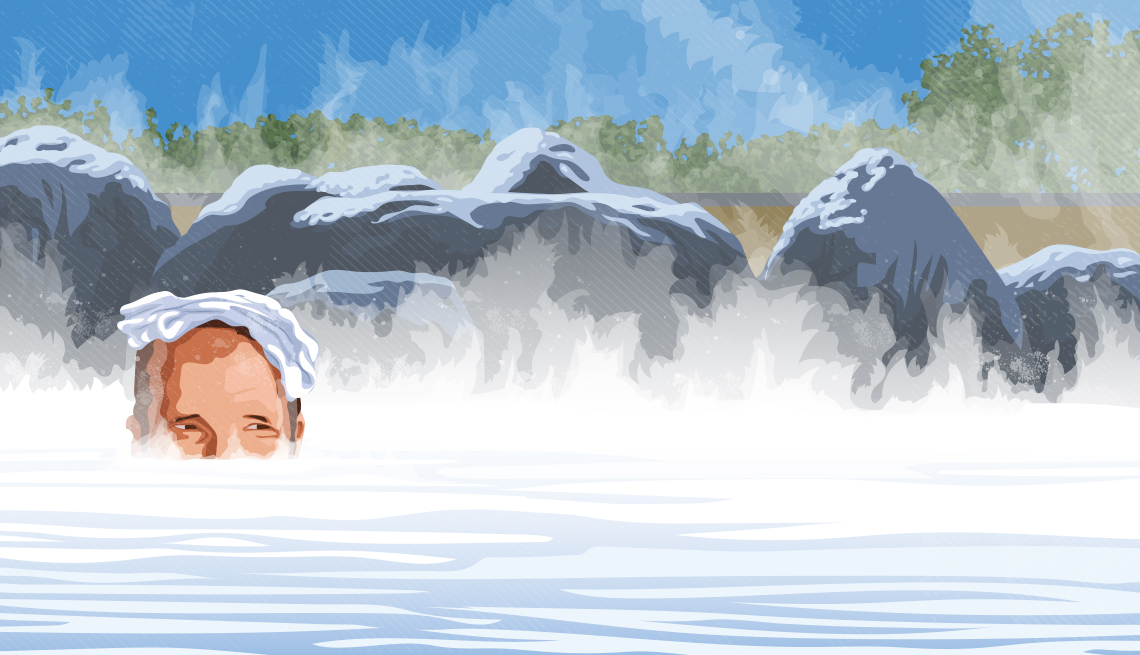Life's a journey: getting naked in japan | members only access
- Select a language for the TTS:
- UK English Female
- UK English Male
- US English Female
- US English Male
- Australian Female
- Australian Male
- Language selected: (auto detect) - EN

Play all audios:

The packing list should have been my first tip-off. For a 10-day hiking trip through rural Japan that included stops at traditional ryokan inns built around communal mineral baths known as
onsen, there was — now that I think back on it — one stunning omission. Nowhere did it mention bringing a bathing suit. I blame my friend CB. He was so enthusiastic in convincing me to join
him on this unmissable, one-of-a-kind adventure along Japan’s Kumano Kodo and Nakasendo trails — “It’s the most breathtaking place on earth! And it’s cherry blossom season!” — that I
overlooked the obvious. This wouldn’t just be a bucket-list walking tour of centuries-old temples, shrines and forests. I would also be confronting my innermost and cringiest fears of
getting buck naked in the company of other humans. The baths, it turns out, don’t allow a stitch of clothing. Nudity is one of those things I thought might get easier with age. One of my
standout memories from childhood is of coming down to breakfast to discover my mother’s hippie sister and her husband reading the newspaper on the couch without as much as a thread between
them and the Watergate headlines. When I blanched and turned to run upstairs, my Uncle Sam said, “Why are you embarrassed? We’re the ones who are naked.” That was adulthood, I figured. At
some point, I, too, would visit relatives for Thanksgiving in the manner of Vitruvian Man. “Something remarkable happened as I reenacted these rituals night after night. I began to worry
less about being undressed.” The future didn’t go that way. For me, even now at age 55, nudity is mostly what occurs in the nanosecond between stepping out of the shower and wrapping myself
in a giant towel. I was never a skinny dipper or someone who mooned the dorm next door, and my wife still teases me about the long-sleeve rash guards and below-the-knee swim trunks I wear
even on tropical vacations. I’m not against showing skin; no judgment if you’re reading this at a naturalist pickleball resort (a real thing). I just don’t feel the call myself to flash the
credentials. So, you can imagine my discomfort that first night in the mountains south of Kyoto when CB announced that a public onsen was the only place to freshen up after miles of arduous
hiking — and that not even a fig leaf was permitted in or around the water. “It’s birthday suits or nothing,” CB said as he started stripping down (it’s astonishing how uninhibited some
people are). I told him, “Go ahead. I’ll catch up.” Our tour company provided us with guidelines on the rituals and rules around bathing, and I pored over those details like an Egyptologist.
Indeed, no clothing could be worn since even a bathing suit can bring dirt or soap into the baths and contaminate the purity of the spring. Nor should one’s hair or mouth ever touch the
water. Feet and other parts must be scrubbed clean, and even tattoos must be covered up. No alcohol, no loud talking. I understood that. But here’s what stumped me: “You may use a small hand
towel for modesty. Carry it with you into the bath but refrain from dipping it in the water.” Say what now? I figured out the trick as I tiptoed into the men’s bathing area. CB was blissed
out in a corner of the bath, so he didn’t notice me trying to mimic whatever the old-timers ahead of me were doing. They crouched down on a low stool at a shower. I crouched down on a low
stool at a shower. They soaped up every crease and crevice. I, too, never got so clean. They stood to walk into the pool. I … well … I hung back for a second so as not to appear creepy. The
tiny towel, meanwhile, wasn’t for drying off but rather for casually holding over your privates as you entered and exited the springs. What’s the secret to not getting the washcloth in the
water? You keep it perched atop your head.